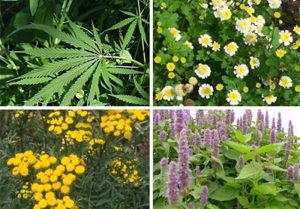In an Interview with IANA, Adviser to Minister of Agriculture Jihad: Over 290 Thousand Tonnes of Medicinal Plants Produced

The Executive of Medicinal Plants’ plan of Ministry of Agriculture Jihad stated that last year, the area under the cultivation of medicinal plants was over 235 thousand hectares. In an interview with IANA, Hossein Zeinali, the Executive of Medicinal Plants Plan of Ministry of Agriculture Jihad referred to the rich flora of Iran, being over
The Executive of Medicinal Plants’ plan of Ministry of Agriculture Jihad stated that last year, the area under the cultivation of medicinal plants was over 235 thousand hectares.
In an interview with IANA, Hossein Zeinali, the Executive of Medicinal Plants Plan of Ministry of Agriculture Jihad referred to the rich flora of Iran, being over 7500 plant species, and added, “currently, over 50 medicinal plants species is under cultivation in Iran, the most important of which are: saffron, Rosa damascena, cumin, coriander, fennel, thyme, chamomile, marigold, valerian, cucurbita pepo, henna, etc.”
Zeinali stated that last year, the area under the cultivation of medicinal plants was over 235 thousand hectares and the medicinal plants cultivated in this area, had been above 290 thousand tonnes.
He went on to say, “considering our country’s need for herbal medicine, this amount of production is insufficient. It is required to develop and expand varieties of medicinal plants cultivation throughout the country.”
The Executive of Medicinal Plants’ plan pointed out the necessity to be concerned about organizing medicinal plants’ production, for, first and foremost, the species in nature need to be preserved and protected, “other advantages of considering medicinal plants’ cultivation is the tendency to consume natural-based products in food and medicine as well as creating direct employment (medicinal plants’ production) and indirect employment (production and sales of herbal medicine).”
He continued, “medicinal plants’ development will lead to the increase of non-oil exports, since there is a worldwide rise in medicinal plants’ consumption, and decrease in the import of chemical food and drugs. Consequently, all this will mitigate foreign currency drains.
The Executive of Medicinal Plants’ plan regarded one of the challenges to medicinal plants production as shortage of reasonable credits (mechanization, agro-processing industries and working capital), “not allocating credits on time, shortage of insurance coverage for medicinal plants’ based products, lack of suitable mechanization for medicinal plants in different production and processing sectors, paucity of technical software infrastructure to organize production as well as establish direct connection between producers and market, are all reasons for the lack of cultivation development of these products.”
Referring to the programs for the implementation of medicinal plants cultivation development plan in steep lands and dryland farming, with 6937 hectares in 2020, he added, “to develop medicinal plants, a medicinal plants’ technical and practical instruction for dryland farming and irrigation farming, has been compiled.”
According to Zeinali, a medicinal plants’ cultivation development plan has been compiled for dryland farming as well as steep lands of 220 thousand hectares, “it has been in the agenda to determine those medicinal plants that are prioritized, to be cultivated in 24645 hectares of lands all throughout the provinces, in the current year.”
He went on to say, “we are following up on receiving subsidy facilities for seedlings to develop medicinal plants with priority for cultivation, as well as facilities and support for medicinal plants’ cultivation in dryland farms and steep areas.”
According to the Executive of Medicinal Plants Plan, allocation of 10,000 billion Rials of facilities to purchase saffron flower with the collaboration of Keshavarzi Bank, Mellat Bank and Export Development Bank of Iran, is being followed up. Also, provincial cut of these products is being prepared in SITA system.
He stressed the actions taken in the first six months of the year in regards to medicinal plants’ plan, “the compilation of medicinal plants ‘ cultivation development plan for production boost in 2020 and compilation of medicinal plants’ propagation process in production, leading to a production boost of 150 million medicinal plants’ seedling and 700 tonnes of medicinal plants’ seeds in the country.”
Zeinali pointed to the compilation of modification and renovation plan of medicinal plants’ garden, and added “we are following up on the compilation of medicinal plants’ comprehensive agreement plan in the country, which will be sent to Plan and Budget Organization, and plan to cultivate medicinal plants in three provinces of East Azerbaijan (Urmia Lake District), West Azerbaijan as well as Kurdistan through 2020- 2021. Also, we are pursuing the operations and the required credits to allocate them in order to carry out the pending projects.”
He went on to say, “we are seeking to support manufacturers of machinery and build the machinery for the harvest of saffron, Rosa damascena, chamomile, cumin as well as machinery for separating saffron stigma, machinery for sorting and winnowing medicinal plants and drying devices. Investigating areas for the possibility of building ‘sorting and winnowing’ devices for medicinal plants with small-scale seeds (cumin, Nigella sativa, Decurainia sophia…) as per global standards.
The Executive of Medicinal Plants Plan revealed the proposition to form coriander stock market as well as holding of several meetings with Iran Mercantile Exchange, “there has been a collaboration to form OSEC Organization for saffron and to present required information.”
He referred to the establishment of a system for medicinal plants market in the country using BEHAK software, “there has been meetings and arrangements have been made to set up national associations for three products of shallot, coriander and aloe vera. Aloe vera national association is being established.
According to the Executive of Medicinal Plants Plan, the Seventh Development Plan for saffron, Rosa damascena and medicinal plants has been compiled.
Tags:
unavailable- Comments submitted by you will be published by administrators after approval.
- Comments that contain mohareb or worse will not be published.
- Comments that will not be published other than English or non-English.

Send Comment
Total comments : 0 Pending review : 0 Published : 0